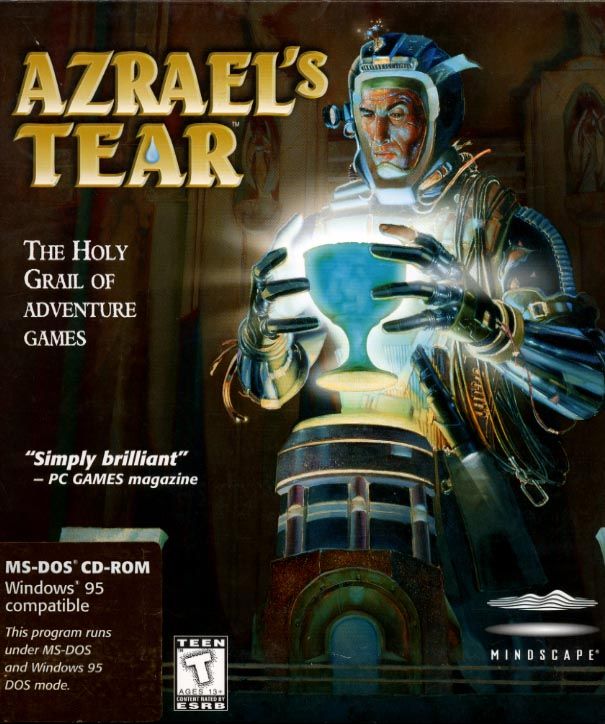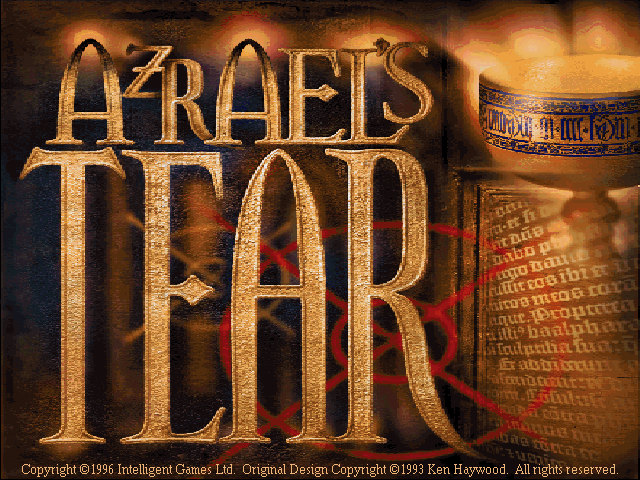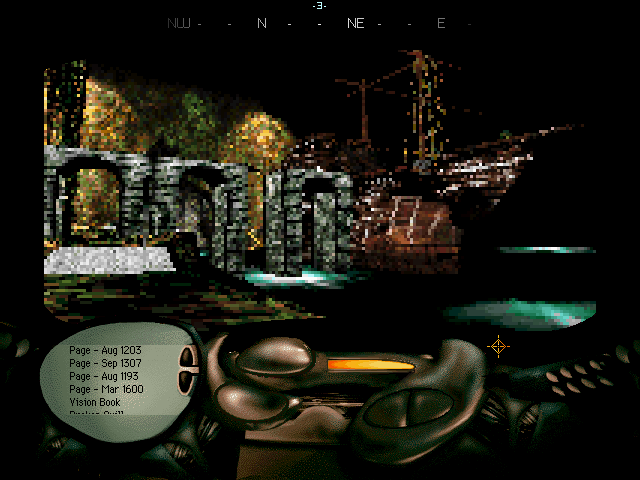Retro Replay Review
Gameplay
Azrael’s Tear positions you as a “raptor,” a high-tech thief sent to plunder long-forgotten sites of untold value. From the opening moments—when the entrance collapses behind you—you’re thrust into a tense, puzzle-driven experience that demands both careful observation and creative problem-solving. Instead of stocking up on weapons and firing at hordes of enemies, you’ll rely on a mixture of tools, gadgets, and sheer wits to navigate each chamber and corridor.
The puzzles in Azrael’s Tear range from classic switch-and-lever conundrums to more elaborate environmental challenges. You might reroute ancient water flows to raise or lower platforms, decipher cryptic runes on stone tablets, or manipulate light beams to unlock hidden doors. These puzzles often chain together so that solving one mechanism reveals clues for the next, creating that satisfying “aha” moment as you piece together the layout of the ruins.
While combat is decidedly light—encounters with spectral guardians and the occasional animated statue offer brief skirmishes—you’ll spend most of your time exploring, backtracking, and hunting for hidden alcoves stuffed with treasure. The game’s reliance on clever level design rather than pure firepower raises the tension: every misstep can send you scrambling for a safe path through collapsing floors or rotating traps. For players who relish brain-teasers over shootouts, Azrael’s Tear delivers in spades.
Graphics
Built on a true 3D engine reminiscent of Quake, Azrael’s Tear showcases expansive caverns, ornate stone chambers, and dirt-streaked tunnels in crisp, fully 3D environments. The architectural details of the Holy Grail’s legendary stronghold—cracked columns, moss-covered reliefs, and ornate altars—feel convincingly ancient. Dynamic lighting casts long, flickering shadows that heighten the suspense as you round each corner.
Textures are richly detailed, from the grain of weathered rock walls to the glint of treasure hoards tucked into alcoves. Subtle particle effects—falling dust motes, drifting embers from lit braziers—add a layer of atmospheric polish. When you trigger a trap or break through a sealed doorway, debris and dust particles respond with realistic physics, reinforcing the feeling of truly being in a precarious, collapsing ruin.
The character models—including your own first-person hands and a few ghostly apparitions—display enough polygonal definition to convey movement fluidly. Although you won’t see many NPCs roaming free, the floating specters you encounter are rendered with a translucent glow that makes them both eerie and memorable. Even years after its release, the graphics of Azrael’s Tear hold up thanks to thoughtful art direction and a focus on mood over flashy gimmicks.
Story
At its core, Azrael’s Tear weaves a simple yet compelling narrative: you are a thief on the hunt for the legendary Holy Grail. The twist—being trapped underground—sets the stage for a journey of discovery rather than a straightforward treasure raid. As you delve deeper, journal entries, carved inscriptions, and ghostly visions piece together the fate of the Grail’s original guardians, lending emotional weight to your mission.
The game uses environmental storytelling to great effect. Uncovered murals hint at ritual ceremonies held in honor of the Grail, while the anguished whispers of lost priests echo through the halls. Each new room you unlock brings fresh fragments of lore that explain why this place was sealed for centuries—and what catastrophic event led to its downfall. Rather than lengthy cutscenes, you learn through discovery, encouraging you to read every tablet and inspect every alcove.
Character motivation is intentionally understated: your raptor protagonist offers minimal commentary, allowing the setting and artifacts themselves to become the true protagonists. This restraint makes the few moments of direct narrative—such as a sudden apparition of a fallen knight—resonate more strongly. The result is a haunting tale of faith, greed, and the price paid by those who guarded the Grail before you.
Overall Experience
Azrael’s Tear stands out as a masterclass in puzzle-oriented exploration games. It forgoes the fast-paced combat of many contemporaries in favor of deliberate, measured progression. This design choice reinforces the game’s sense of vulnerability and heightens the thrill of each discovery. If you enjoy meticulously crafted environments and cerebral challenges, you’ll find hours of satisfaction unraveling every secret.
There are occasional pacing hiccups—some puzzles can stall progress if you overlook a minor detail, and a handful of rooms feel like trial and error more than logical deduction. However, the prospect of uncovering the next relic or unlocking a hidden chamber usually provides enough motivation to push through. The game’s moderate length also means you’re unlikely to burn out before reaching its satisfying conclusion.
Ultimately, Azrael’s Tear offers a richly atmospheric adventure that merges the excitement of archaeological treasure hunting with the intellectual rigor of puzzle-solving. From the echoing caverns of northern Scotland to the cryptic messages left by long-dead priests, every element comes together to create an engrossing experience. Potential buyers who prize exploration, story-driven mystery, and inventive level design will find Azrael’s Tear a deeply rewarding journey.
 Retro Replay Retro Replay gaming reviews, news, emulation, geek stuff and more!
Retro Replay Retro Replay gaming reviews, news, emulation, geek stuff and more!









Reviews
There are no reviews yet.